Fruits and Vegetable Storage and Preparation Tips

Storage and Preparation Tips
Reviving Wilted Greens
It’s important to know that for storage and preparation refrigerators are dry places. Wilted greens are usually just dried out which can still occur even if the greens remain in constant refrigeration. Immerse the wilted greens in cold water by placing them in a dish, filling it with water, and placing it in the refrigerator overnight. Now you never need to compost your wilted greens or lettuce. This process can also be used with root vegetables that become limp.
General Storage Guidelines
For storage and preparation don’t store vegetables and fruits together. Fruits give off a ripening agent called ethylene that can prematurely ripen and spoil surrounding vegetables.
For vegetables: Before you store, remove all rubber bands and ties. Trim leafy ends. To keep the vegetable from drying out leave an inch. Store the veggies in a bag that have some punctured holes to allow for ample air flow. Loosely pack the vegetables in the fridge. The closer they are, the faster they will rot. Wash leafy greens before storing. To wash, soak them in a sink full of water. Soft mushrooms and herbs should not be washed until right before you use them.
For fruits: avocados, non-cherry stone fruits, mangoes, melons, tomatoes, apples, and pears will proceed to ripen if left out on a counter. Items like all citrus, bell peppers, berries, and grapes will deteriorate and should be refrigerated.
Bananas, in particular, ripen very quickly, and will also speed the ripening of any nearby fruits.
Storing Fruits and Vegetables
Vegetables – Storage and Preparation
Artichokes
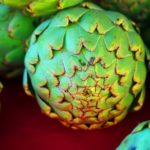

Keep refrigerated (36°-40°), storing in a perforated plastic bag to retain moisture. Steam the Artichokes and serve with browned butter and vinaigrette for dipping.
Arugula
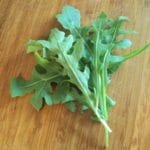

Keep refrigerated (36°-40°), storing in a perforated plastic bag, away from other fruits to avoid deterioration. Great raw in a salad or cooked with other greens.
Asparagus
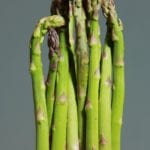

Bend a stalk until it snaps. That is the point to cut off the ends, place in a jar of water and refrigerate (36°-40°). Steam, sauté or roast just until tender – do not overcook.
Beets
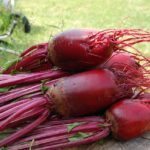

Keep refrigerated (36°-40°). Remove stems, leaving 1”-2” on the root and storing the leaves as you would other greens. Roast at 475°, wrapped in double layer foil for 1 hour.
Bok Choy
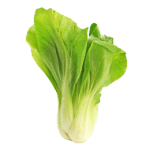

Keep refrigerated (36°-40°), storing in a perforated plastic bag to retain moisture. Stir fry washed and chopped bok choy with ginger and garlic, adding soy sauce to the pan just before serving.
Broccoli, Broccoli Rabe
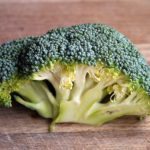

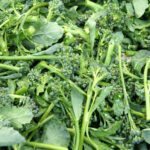

Keep refrigerated (36°-40°), storing in a perforated plastic bag to retain moisture. Steam or sauté. Great with anything.
Cabbage and Brussel Sprouts


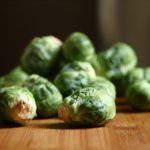

Keep refrigerated (36°-40°), storing in a perforated plastic bag to retain moisture. Chop and blanch in boiling, salted water for 12 minutes or until tender.
Carrots


Keep refrigerated (36°-40°), storing in a perforated plastic bag to retain moisture. Remove tops, leaving 1”-2”. Eat raw, steam, sauté with olive oil and garlic, roast or even bbq.
Cauliflower and Romanesco
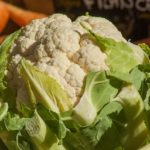

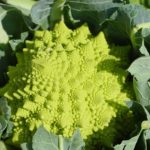

Keep refrigerated (36°-40°), storing in a perforated plastic bag to retain moisture. Eat raw, or steam and serve with salt and pepper. Also, roast on a baking sheet with olive oil, sea salt and pepper at 400° for 20 minutes.
Celery


Keep refrigerated (36°-40°), storing in a perforated plastic bag to retain moisture. Chop and use in salads, stir fry or whole in green juice.
Celery root/Celeriac
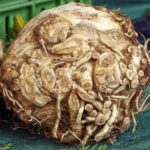

Wrap the Celery root in a damp towel and place in the crisper. It will keep for 2 or 3 weeks.
Corn


Leave the fresh corn unhusked in an open container, but corn really is best eaten sooner than later for maximum flavor.
Cucumbers and Armenian Cucumber


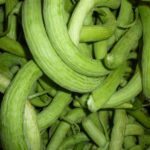

Keep refrigerated (36°-40°). Slice thin and mix with yogurt, salt, and pepper for a quick salad.
Eggplant
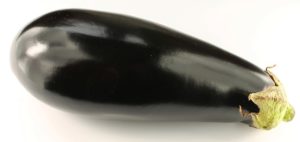

Keep refrigerated (36°-40°), storing in a perforated plastic bag to retain moisture. Cut eggplant into “rounds,” brush with olive oil, salt, and pepper, place on medium-high bbq grill and cook until tender and golden. About 4 minutes each side.
Fennel
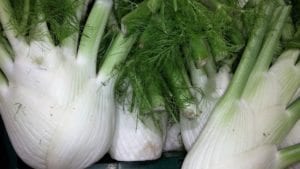

Keep refrigerated (36°-40°). Remove the top and save. Use the fronds with meat or fish when roasting. Trim the bulb into ½” thick slices, roast with olive oil and sea salt at 375° for 20 minutes. This method gives the fennel a sweet caramelized flavor.
Garlic
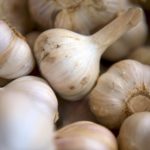

Store whole garlic in cool, dry, dark place (55°-65°), with proper ventilation, away from potatoes (which absorb the onion’s moisture). At medium high heat, heat olive oil and butter then add onions. Cook until caramelized and add to anything.
Roasted Garlic can be:
- Use as a spread for homemade pizza.
- Mixed into Mashed Potatoes.
- Combined with some mayo or mustard for a delicious sandwich spread or burger topping.
Ginger
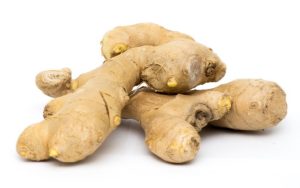

You can freeze Ginger for up to 6 months. It’s not necessary to thaw it before grating.
Greens: Collard, Kale, Chard, and Mustard Greens
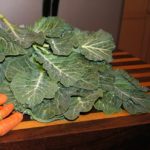

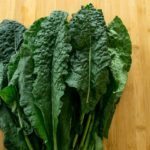





Wash thoroughly. Keep refrigerated (36°-40°), storing in a perforated plastic bag to retain moisture. Discard stems or set aside for stock. Sauté chopped greens with onions and garlic or steam and serve with a wedge of lemon.
Green beans
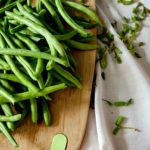

Keep refrigerated (36°-40°), storing in a perforated plastic bag to retain moisture. Trim and steam, toss with olive oil or coat with olive oil, salt and pepper and roast at 400° for 15 mins.
Green onions
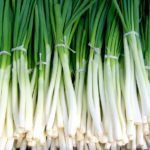
Keep refrigerated (36°-40°), storing in a perforated plastic bag to retain moisture. Use fresh in salads or sauté with other veggies.
Herbs


Remove the band or tie; wash and dry. Snip off the ends and store in a glass of water. Cover with a plastic bag and leave in the refrigerator. Add herbs to sauces for flavor.
Kohlrabi
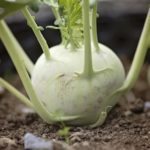

Remove top. Keep refrigerated (36°-40°), storing in a perforated plastic bag to retain moisture. Slice and eat plain or grate into a salad.
Leeks
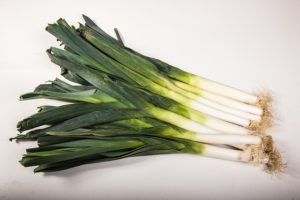

Keep refrigerated (36°-40°). Trim white part, discard greens. Slice the white part into ½” rounds, drizzle with olive oil and bake at 350° for 30 mins.
Lettuce


Keep refrigerated (36°-40°), storing in a perforated plastic bag to retain moisture. Keep away from other fruits to avoid deterioration. Alternative storage – cut leaves from the base, wash, dry, roll into paper towels and store in zip lock bag.
Onions (Regular, Bunching, Torpedo, and Shallots)
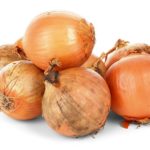

Store whole onions in cool, dry, dark place (55°-65°), with proper ventilation, away from potatoes (which absorb the onion’s moisture). Always refrigerate cut onions. At medium high heat, heat olive oil and butter then add onions. Cook until caramelized and add to anything.
Parsnips
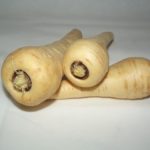

Keep refrigerated (36°-40°), storing in a perforated plastic bag to retain moisture. Use a mixture or parsnips and potatoes for mashed potatoes for a richer, complex taste!
Peppers
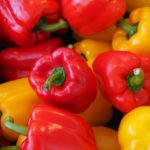

Store bell peppers, whole, in a cool, dry place (45°-55°) away from fruits to avoid over-ripening. Always refrigerate cut peppers. Eat raw or stir fry.
Potatoes
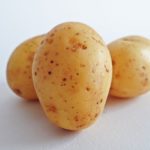

Store whole potatoes in a dry, cool, dark place with good ventilation. Do not refrigerate. Boil, roast or sauté.
Radicchio
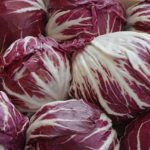

Place in the refrigerator in an open container with a damp cloth on top.
Radishes
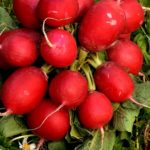

Keep refrigerated (36°-40°), storing in a perforated plastic bag to retain moisture. Remove tops, leaving 1”. Wash and serve as a snack with carrots. Make radish chips – slice and roast with seasoning until crisp – not too much! Slice into salads. Make radish top soup (radish greens without the tough stems).
Rhubarb
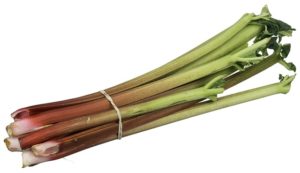

Rhubarb wilts fast, so store it in the refrigerator, where it will keep for two to three days. If you want to save it long-term, wash rhubarb, and cut it into pieces. Place it in an airtight container in the freezer, where it should keep for up to 9 months.
Snap peas
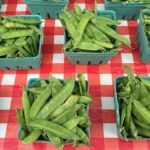

Keep refrigerated (36°-40°), storing in a perforated plastic bag to retain moisture. Cut and sauté with olive oil and sea salt.
Spinach


Keep refrigerated (36°-40°), storing in a perforated plastic bag away from fruit to avoid deterioration. Wash and remove stems, sauté onions in olive oil over medium heat. When browned, add the spinach. When the Spinach is wilted add salt and pepper to taste. Toss with pasta.
Summer squash




Keep refrigerated (36°-40°), storing in a perforated plastic bag to retain moisture. Cut in half, brush with olive oil, salt, and pepper, place on bbq grill until just tender. Approximately 4 minutes per side.
Sweet potatoes
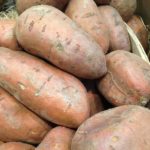

Keep in a cool, dry, and dark area with proper ventilation. Do not refrigerate. Cut in half longitudinally, brush with olive oil, sea salt, and pepper, roast at 400° for 30 minutes. Or use brown sugar and butter instead of olive oil.
Tomatoes
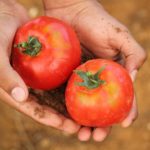

Keep at room temperature (55°-70°). Refrigeration makes tomatoes mealy and flavorless. Cut and mix with balsamic dressing or slice and serve with fresh mozzarella.
Turnips and Rutabaga
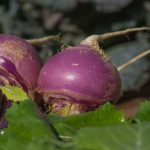

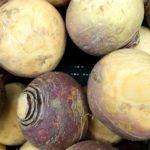

Keep refrigerated (36°-40°), storing in a perforated plastic bag to retain moisture.
Cooking
- Peel 1 pound and cut into 1” wedges.
- Melt butter in a skillet and add turnips and rutabagas, ½ cup water, ½ tablespoon lemon juice and ½ teaspoon salt and bring to a boil.
- Decrease heat and simmer covered for 30 minutes.
- Increase heat to medium, uncover and briskly simmer until liquid is gone and turnips are tender and glazed (another 25-30 minutes). Cooked through but still retain their shape.
Winter squash


Store in a cool, dry place (45°-55°). Peel, cube, and roast with olive oil and other seasonings (nutmeg?) at 375° for 30 minutes.
Fruits – Storage and Preparation
Apples
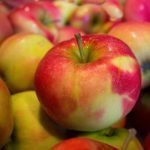

Keep apples refrigerated (36°-40°), keep them apart from other fruits and vegetables as apples produce ethylene, that encourages ripening. Apples can be eaten raw as a snack or slice into a green salad along with walnuts or pecans. Apples are also delicious when sliced thin into a sandwich with soft cheese.
Avocados
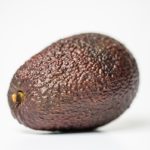

Storage and Preparation – When fully ripe, store whole avocados in a cool, dark place (45°-50°). Using a fork mash them with a little lemon juice, salt, and pepper for a quick guacamole.
Avocados don’t ripen on the tree. They “soften” or ripen after they have been harvested or fall off the tree. To speed up the avocado ripening process, we recommend placing your unripe avocados, with an apple or banana, in a brown paper bag for two to three days until they are ripe.
Bananas


Store at room temperature (55°-70°). Bananas can be eaten plain or add to cereal or fruit salad.
Cherries


Since cherries don’t ripen after harvest and tend to spoil quickly, they should be stored in the refrigerator. Cherries will keep for three to four days in the fridge. They tend to absorb the odors of other foods, so keep them stored separately. Wash cherries just before serving.
Dates
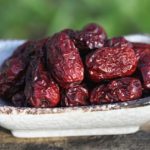

Dates will last up to a year if you keep them refrigerated in an airtight container.
Figs


For storage and preparation keep figs refrigerated (36°-40°). They can be eaten plain or drizzled with honey for dessert.
Guava
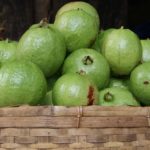

When ripe a guava will slightly yield when you pressed it, and its skin will be red or yellow, depending on the variety. for storage and preparation allow the unripe guavas to sit for three to four days at room temperature, or to speed up the ripening place them in a paper bag. Store ripe guavas in the refrigerator, where they can keep for up to 4 days.
Grapes


Keep grapes refrigerated (36°-40°), in a perforated plastic bag. Do not wash until ready to use. Grapes are an excellent accompaniment to a cheese course and are tasty in a fruit salad.
Jujube


Jujubes can stay out on the counter for a week before they begin drying out, but as they shrivel, they will get sweeter. Stored in the refrigerator Jujubes will last three weeks.
Kiwis


Keep kiwis refrigerated (36°-40°), and away from other fruit to prevent over-ripening. Eat plain or sliced into a fruit salad. Try with yogurt.
Kumquat


Kumquats are thin-skinned and more perishable than most citrus. They should keep at room temperature for about five days, and in the refrigerator for about three weeks.
Lychee
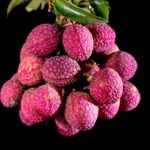

For storage and preparation, it’s best to eat Lychees soon after purchase. To keep the Lychee longer, wrap them in paper towels and store them in a perforated plastic bag in the refrigerator.
Lemons and limes




Store in a cool, dry place (45°-50°). To avoid absorption of off-flavors keep apart from other fruits. Wash before using. Use lemons and limes in salad dressing, iced tea and squeezed into water for a kick of flavor.
Mangos
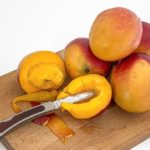
Keep mangos refrigerated (36°-40°). Mangos are good plain and are an excellent addition to fruit salad.
Melons
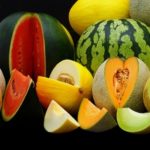

Watermelons will not ripen any further once picked from the vine. Store them in the fridge — heat will cause the juicy flesh to become fibrous and dry out. Chilling adds to their refreshing character. Place in the refrigerator for two weeks, and sometimes as long as three.
Oranges, Grapefruit, Mandarin, and Tangelo


Store in a cool, dry place (45°-50°). Always refrigerate cut citrus. They are a great seasonal pleasure and can be enjoyed plain or squeezed into juice.
Pears and Asian Pears
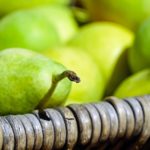

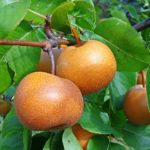

Store whole pears in the refrigerator (36°-40°), keep them apart from other fruits and vegetables as apples produce ethylene, that encourages ripening. Pears are delicious plain but can also make for an elegant dessert. Cut in half lengthwise, lay on a baking pan or dish, then top with butter and brown sugar and bake at 350° for 25 minutes. Serve with vanilla bean ice cream.
Persimmons


When ripe, store in the refrigerator (36°-40°). There are two kinds of persimmon types; astringent and non-astringent. Astringent persimmons need to become soft and ripe before eating. Eat non-astringent persimmons anytime. The Fuyu variety (non-astringent) can be eaten plain, biting into it like an apple. Cook the Hachiya variety (astringent) in apple pie or stews. You can also wait until they are super ripe (very soft and mushy), then they can be eaten fresh. Freezing the Hachiya also removes the texture they possess when eaten firm and uncooked.
Pomegranates




Keep pomegranates refrigerated (36°-40°).
To extract the seeds:
- Cut the blossom end out
- The white pith can be removed, but do not break the red pulp around the seeds
- Score the skin into quarters
- Split into halves then halves again, following the score lines
- Bend back the rind and pull out the seeds
Eat seeds whole or juiced into mixed drinks.
Quince
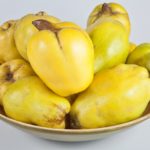

Quinces will ripen at room temperature. Once ripened, they will have an exceptional fruit-flowery aroma. As they ripen their skin turns from green to yellow. They bruise easily, so to store them, wrap separately in plastic wrap and place in the refrigerator, where they’ll keep for several weeks.
Sapote
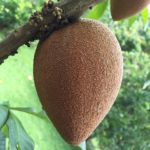

Sapotes have a nick near their stem that reveals their interior — if green, the fruit isn’t ripe and should be kept at room temperature until it yields when pressed gently. Ripe sapotes can be stored in the refrigerator, where they should keep for up to 3 days.
Starfruit


The Starfruit has a reliable ripeness sign – the color of its ribs. The Starfruit ribs are the pointy seams that give its star shape. If they are green, leave the fruit at room temperature for a few days until they begin to brown. Ripe Starfruit can be stored in the refrigerator for about a week.
Stone Fruit: Nectarines, Peaches, Apricots, etc.
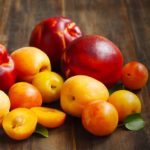

Store whole stone fruit in the refrigerator (36°-40°). Use plain as a snack or in a fruit salad.
Strawberries and Bush berries


Store them in the coolest part of the refrigerator (36°-40°), loosely covered with plastic wrap. Do not wash until ready to use. Fresh berries are highly perishable. Serve plain or with a fruit salad.
Resources for more storage and preparation
- The Ultimate Guide on Kitchen Organization – It includes everything from how to have the right decluttering plan in place, to how to practice kitchen and cooking safety measures to ensure a healthy, happy home
- Harvest2U Recipes for organic fruits and vegetables
- Washington’s Green Grocer storage and preparation tips
- Forks Over Knives storage and preparation tips for storing fruits and vegetables
